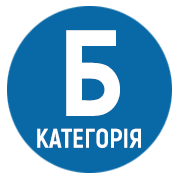USING VIRTUAL TOUR DEVELOPMENT TECHNOLOGIES IN SCHOOL EDUCATION
DOI:
https://doi.org/10.25128/2415-3605.23.1.2Keywords:
virtual tour, VR technologies, distance learning tools, Panotour ProAbstract
The article is dedicated to exploring the possibilities of using VR technologies in the educational process, specifically virtual tours. The relevance of using virtual tours in the modern world is described, and an analysis of the advantages and disadvantages of using this technology in educational institutions, educational and extracurricular events is conducted. The main skills and competencies that can be developed with the help of VR technologies are identified. The possibilities of applications for creating virtual tours are analyzed, with particular emphasis on the Panotour Pro program as a tool for creating virtual tours. Instructions on how to use the program and the process of creating a virtual tour of an architectural monument are provided. Additionally, the article presents the results of an experimental study that demonstrated the positive impact of virtual tours on learning quality and the development of specific competencies in students. Promising directions for the application of this technology in educational institutions are identified. The article explores the practical implications of using virtual tours, which enhance visualization and understanding. These findings can be valuable for teachers, students, and researchers in the field of education and technology. The scientific novelty lies in their potential as a tool for improving the effectiveness of visualization and understanding of objects and phenomena in the surrounding world. With the help of VR technologies, realistic virtual models of objects that are impossible or unsafe to observe in real life can be created. The further development vector can be directed towards the implementation of the integration of virtual tours into such educational programs as history, geography, biology, and others.
References
Олексійовець В. Ю., Карабін О. Й. Технологія та методи розробки віртуальної екскурсії. Сучасні інформаційні технології та інноваційні методики навчання: досвід, тенденції, перспективи: Матеріали V Міжнародної науково-практичної інтернет-конференції (м. Тернопіль, 30 квітня 2020 р.). Тернопіль: ТНПУ ім. В. Гнатюка, 2020. С. 28–31. URL: http://dspace.tnpu.edu.ua/handle/123456789/15349
Скасків Г. М., Голдис В. М. Технології проєктування віртуальних турів та віртуальних екскурсій. Сучасні інформаційні технології та інноваційні методи навчання: досвід, тенденції, перспективи: Матеріали VІ Міжнародної науково-практичної інтернет-конференції (м. Тернопіль, 12–13 листопада 2020 р.). Тернопіль: ТНПУ ім. В. Гнатюка, 2020. С. 49–51. URL: http://dspace.tnpu.edu.ua/handle/123456789/16981
Чотири безкоштовні інструменти для створення віртуальних екскурсій. URL: https://vseosvita.ua/news/4-bezkoshtovni-instrumenty-dlia-stvorennia-virtualnykh-ekskursii-6356.html
Balyk N., Grod I., Vasylenko Y., Shmyger G., & Oleksiuk V. (2021). The Methodology of Using Augmented Reality Technology in the Training of Future Computer Science Teachers. International Journal of Research in E-Learning, 1–20. URL: https://doi.org/10.31261/IJREL.2021.7.1.05
Qvist, P., Kangasniemi, T., Palomäki, S., Seppänen, J., Joensuu, P., Natri, O., Närhi, M., Palomäki, E., Tiitu, H., & Nordström, K. (2015). Design of Virtual Learning Environments: Learning Analytics and Identification of Affordances and Barriers. International Journal of Engineering Pedagogy (iJEP), 5(4), pp. 64–75. URL: https://doi.org/10.3991/ijep.v5i4.4962






